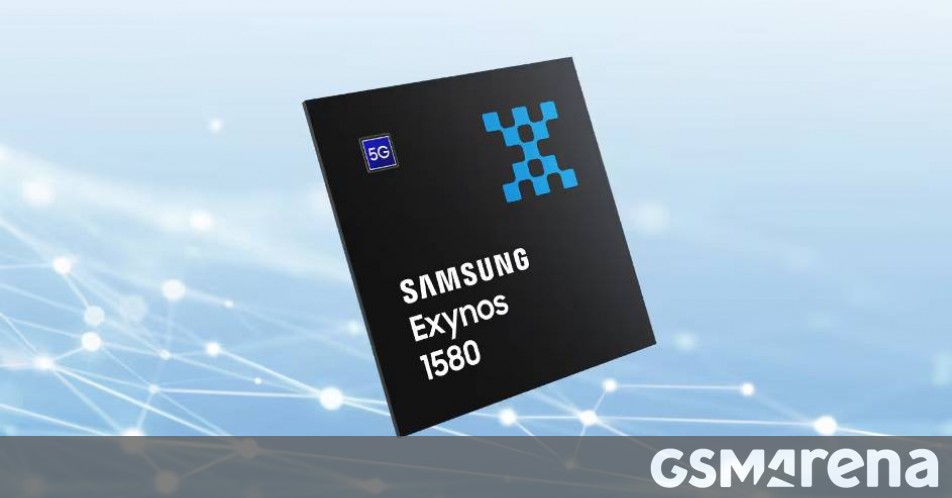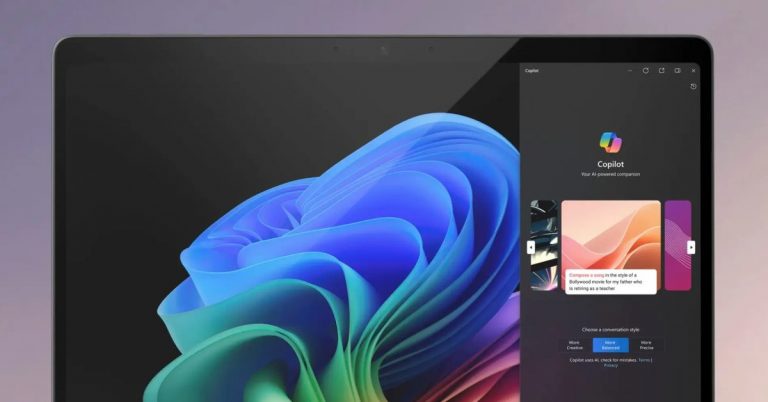Samsung’s Revolutionary Exynos 1580 Processor Unveiled: Twice the Power, Double the Performance

Samsung Exynos 1580: A Major Upgrade in Performance and Power Efficiency
The Exynos 1480 was a star in the mid-range chip department, with impressive sustained performance. However, it was only ever used in Samsung’s own devices, specifically the Galaxy A55. Now, the tech giant is set to release the Exynos 1580, which is likely to be used in the upcoming Galaxy A56 and potentially other devices like tablets.
Architecture and Performance
Built on Samsung’s third-generation 4nm EUV FinFET process, the Exynos 1580 represents a major upgrade over its predecessor. With the new ARMv9 architecture, the chip boasts a three-cluster design, comprising one prime Cortex-A720 core, three big A720 cores, and four A520 cores. This change alone provides a significant performance boost compared to the 1480, which utilized ARMv8 cores.
The GPU features AMD’s RDNA 3 architecture, now with two Work Group Processors, a significant increase from the single WGP on the 1480. Samsung claims that maximum performance is up by 37%, and performance at the same power level as the 1480 is up by 20%. Additionally, the GPU also sees an increase in the GL2 cache.
NPU and Memory
The NPU delivers 14.7 TOPS of performance, a significant jump from the 4.9 TOPS of its predecessor, although it’s not clear if this is due to the new design or improved software optimization. The Exynos 1580 supports LPDDR5 RAM and UFS 3.1 storage, ensuring seamless and fast data processing and storage.
Display and Camera Support
Display and camera support remain largely unchanged, with a maximum resolution of 1080p+ at 144Hz and single 200MP cameras (or dual 32+32MP @ 30fps) with 4K video at 60fps. However, the new chip does boast improved image processing capabilities, which could lead to enhanced camera performance.
Connectivity and Power Consumption
In terms of connectivity, the Exynos 1580 offers the usual suspects: 5G (both sub-6GHz and mmWave), Wi-Fi 6E (ax), and Bluetooth 5.4. While there’s no AV1 decoder, Samsung is focusing on more practical uses for its devices.
Comparison to the Exynos 1480
The table below illustrates the key differences between the Exynos 1480 and 1580:
| Feature | Exynos 1480 | Exynos 1580 |
|---|---|---|
| Node | 4nm EUV | 4nm EUV |
| CPU (prime) | – | 1x Cortex-A720 @ 2.9GHz |
| CPU (big) | 4x Cortex-A78 @ 2.75GHz | 3x Cortex-A720 @ 2.6GHz |
| CPU (small) | 4x Cortex-A55 @ 2.0GHz | 4x Cortex-A520 @ 1.95GHz |
| GPU | Xclipse 530 (RDNA 3, 1x WGP) | Xclipse 540 (RDNA 3, 2x WGP) |
| NPU | 6K MAC | 6K MAC (14.7 TOPS) |
| RAM | LPDDR4X, LPDDR5 | LPDDR5 |
| Storage | UFS 3.1 | UFS 3.1 |
| Display | 1080p+ @ 144Hz | 1080p+ @ 144Hz |
| Camera | 200MP, 4K @ 60fps | 200MP, 4K @ 60fps |
| 5G | NR (5.1Gbps down, 1.28Gbps up) mmWave (4.84Gbps down, 0.92Gbps up) |
NR (5.1Gbps down, 1.28Gbps up) mmWave (4.84Gbps down, 0.92Gbps up) |
| 4G | Cat. 18 (6CC 1.2Gbps down, 2CC 211Mbps up) | Cat. 18 (6CC 1.2Gbps down, 2CC 211Mbps up) |
| Wi-Fi | Wi-Fi 6E | Wi-Fi 6E |
| Bluetooth | 5.3 | 5.4 |
Conclusion
The Exynos 1580 is a promising upgrade in terms of performance, power efficiency, and features. With its new architecture and improved components, this chip is poised to bring about a new level of performance and efficiency to Samsung’s mid-range devices. With its enhanced camera capabilities, improved power consumption, and advanced connectivity options, the Exynos 1580 is an exciting development in the world of mobile processors.





